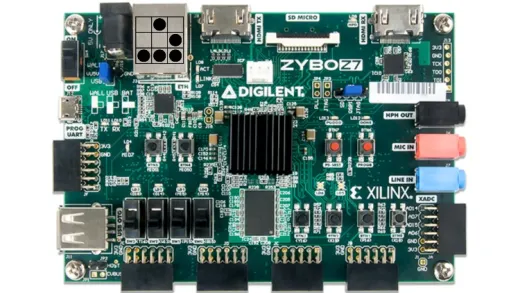Brief Summary
This course is designed for both new and experienced engineers keen on mastering VHDL for designing digital systems with FPGAs. You’ll dive into practical VHDL techniques, get hands-on with the Zybo Z7 board, and learn to create efficient, reusable designs.
Key Points
-
Learn VHDL syntax and semantics
-
Create synthesizable designs with VHDL
-
Hands-on experience using Zybo Z7 Development Board
-
Utilize Xilinx Vivado toolset
-
Design practical test-benches in VHDL
Learning Outcomes
-
Understand VHDL concepts and components
-
Develop VHDL models and designs
-
Implement finite state machines
-
Design and test robust VHDL test-benches
-
Gain confidence in FPGA applications
About This Course
For both the beginner and experienced Engineer using Vivado on the Zybo Z7 Xilinx Zynq FPGA Development Board
Teach yourself the analysis and synthesis of digital systems using VHDL to design and simulate FPGA, ASIC, and VLSI digital systems. Participants learn the fundamental concepts of VHDL and practical design techniques using a Xilinx FPGA Development Board and simulation software for hands-on experience. The VHDL methodology and design flow for logic synthesis addresses design issues related to component modeling, data flow description in VHDL and behavioral description of hardware. An emphasis is placed on understanding the hardware description language, VHDL design techniques for logic synthesis, design criteria, and VHDL applications.
At the end of this course, participants will be able to accomplish the following:
Describe and explain VHDL syntax and semantics
Create synthesizable designs using VHDL
Use Digilent Zybo Z7: Zynq-7000 ARM/FPGA SoC Development Board for hand-on experience
Use the Xilinx Vivado toolset
Design simple and practical test-benches in VHDL
Design and develop VHDL models
Prerequisites:
Even if you're now already familiar with VHDL but you've:
Never used an attribute other than ‘event?
Never used variables?
Always used a process where a single concurrent statement would have sufficed?
Never used assert or report statements except (maybe) in a test-bench?
Never used an unconstrained vector or array?
Never used a passive process inside of an entity?
Never used a real or the math_real library package in synthesizable code?
Always used a single process per signal assignment?
then this course will definitely have something for you as well. You will learn finite state machine design, the two-process design methodology, test-bench design, combinatorial and sequential logic, and extensible synthesizable designs that are reusable.
Describe and explain VHDL syntax and semantics
Create synthesizable designs using VHDL
Use Xilinx FPGA development board for hand-on experience




Razel Y.
😃